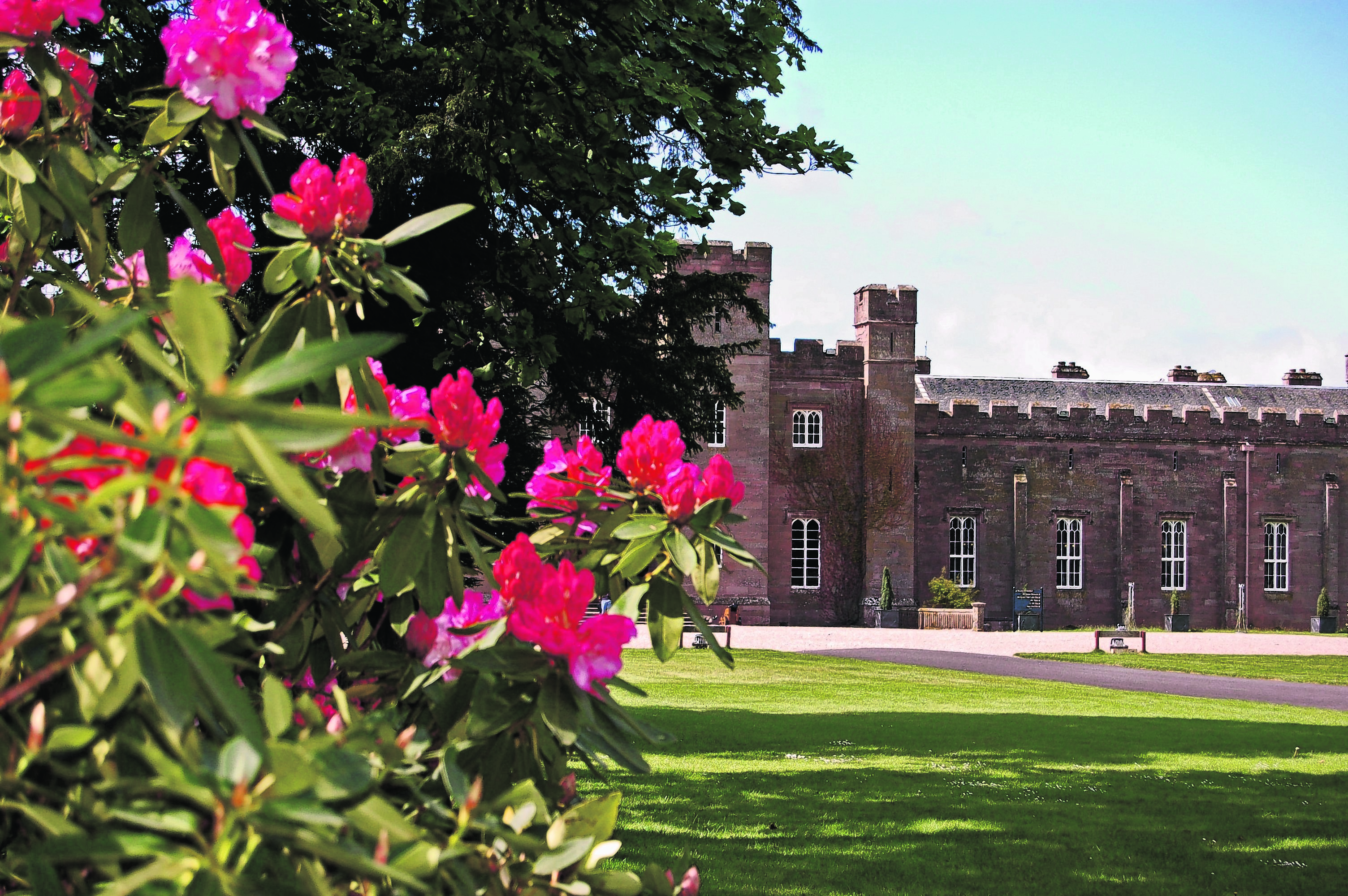Members of the public can now step out in style at Scone Palace after three new walking routes, showcasing historical, horticultural and wildlife highlights of the palace’s 100 acres of grounds, have opened.
The colour-coded walks, which are included on a map handed out to visitors on arrival, are of varying length and are designed to appeal to all ages and abilities.
Two of the three paths are also fully accessible to wheelchairs.
The Kings’ Walk takes visitors on a gentle stroll to discover the historical importance of the Moot Hill, the ancient crowning place of Kings of Scots, and to capture the view from the mediaeval archway, flanked by the original walls and turrets.
The Third Earl’s Walk provides a great opportunity to explore remnants of Scone’s mediaeval history and wander through the grounds and 18th-century Pinetum.
Along the way, there are plenty of chances to stop and admire the vistas and plantings created by the visionary third Earl of Mansfield while experiencing the changing seasons, from winter displays of snowdrops, spring daffodils, bluebells and laburnum and summer herbaceous plantings, to the vibrant and fiery autumnal colours.
Walkers are also welcome to wander through the new kitchen garden and see the fresh, seasonal produce which supplies the palace kitchens, and to take on the challenge of the Murray Star Maze.
The hour-long Friar’s Den Walk offers the chance to get back to nature, deep in the beautiful and tranquil grounds, while enjoying Scone’s rich wildlife in all its glory.
A sanctuary for bird lovers, Scone is home to one of Britain’s most enigmatic and elusive wild birds, the hawfinch, just one of more than 50 bird species breeding in the grounds.
As well as woodpeckers, warblers, owls and siskin, visitors might even be lucky enough to spot the nuthatch, one of Scotland’s rarest birds and an exciting new arrival to Perthshire in the last few years.
The Friar’s Den Walk also offers an opportunity to see one of our best-loved but most endangered mammals, the red squirrel, as well as slender roe deer with their distinctive buff-coloured rumps.
On the riverbank, too, sightings of heron, kingfishers and otters are always a possibility.
Due to the terrain and fixed gates, the final stage of the Friar’s Den Walk is not suitable for those in wheelchairs or with prams.
The new paths were built by the palace’s gardens and maintenance team, under the leadership of head
gardener Brian Cunningham, and form part of a wider planned development of the gardens and grounds.
“In 2013, we began with the construction of new pathways in the kitchen garden, which enabled visitors to wander through the vegetable and cut-flower beds, along with the building of a link from an existing path through the flower garden to the Murray Star Maze,” said Brian.
“This year, we have already gone into two areas, clearing Rhododendron ponticum and sycamore trees that have self-seeded.
“This has now made The Minister’s Tomb at the site of the Old Scone Church accessible.
“The second area was home to a network of paths over 100 years ago, and we now have plans to develop a collection of Acers there.”
Brian will also be conducting a fun and informative tour of the palace gardens on the first Wednesday of each month (June, July and August), at 2.30pm.
Fact box
Where: Scone Palace, Scone.
When: The palace is open daily from April 1 to October 31. Gates open at 9.30am and last admission is 5pm. Grounds close at 5.45pm.
Cost: Admission to palace and grounds: adult £10.50, concessions £9.80, child £7.60, family £33. Season tickets are also available. Tickets to the grounds only are £6.30 for adults, £4.40 for children, £5.70 for seniors / students while family tickets are £20.
Contact: 01738552300 or visit www.scone-palace.co.uk
